Let’s talk about stock. Not everyone has the means to take their own photographs of models to use in their artwork. Even those that do will need stock images from time to time. For example, an artist living in the UK is unlikely to be able to capture a tiger in the wild, or a desert background.

The use of stock images in artwork, particularly in artwork for sale is not without issues. I will outline some of the things that you need to consider in relation to: 1. stock photo websites where you pay for an image, 2. resource sites, 3. creative commons and the public domain, 5. deviant art, 6. other sources and 7. restrictions on your own photographs.
I do not claim to be an expert and certainly do not have any legal training but I really hope that these observations are helpful.
1. Stock Photo Websites Where You Pay For An Image And/Or Subscribe
There are a number of sites that offer images for a subscription fee or individual sale; such as Adobe Stock, ModelPhotos4Sale, Colourbox, Neostock, 500px Marketplace, Big Stock Photo, Shutterstock, iStock Photo and Dreamstime.
When you purchase stock, you are not purchasing the image per se, but rather a license to use it. Just because you pay for a license, you cannot assume that this covers all uses. The terms of different licenses can be confusing. Usually there are 2 types: Standard License and Extended License. All art related work intended for resale in any form requires an Extended License.
It may be helpful if you view these sites as primarily serving book cover artists, graphic designers, marketing and advertising professionals. This makes it easier to understand the Standard License terms. A Standard License will allow the use of images for commercial purposes such as book covers, web design, flyers, posters. So when ‘artwork’ is referred to in these terms it refers to the use of the image to sell a product, idea, company etc. Such artwork can be made into, for example, postcards. So when the license terms discuss print runs this is what they are referring to. This also refers to book and cd covers, for example, since the stock photo is being used to sell another type of content (words, music). Print runs do not correspond to stand-alone artwork for sale.
A Standard License is fine if you are showcasing your work but you cannot then sell this work. Showcasing is extremely helpful because it essentially advertises your skills. When potential buyers can see what you do it may prompt them to commission you. You can then factor in the cost of an Extended License in your quote.
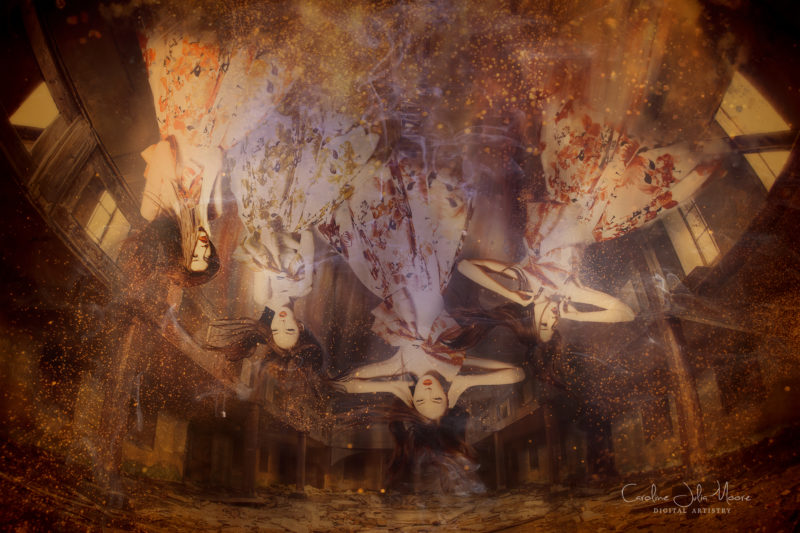
Artwork for sale that uses a stock image requires an Extended License. This is even if you manipulate an image. It is considered that the primary value of your artwork is in the stock photo itself. In essence, without the stock photo, your artwork would not exist and you would have nothing to sell.
I received this email response from Dollar Photo Club (which has since been amalgamated with Adobe Stock):
“Thank you for contacting us. If the artwork is being used in art for your own personal use or enjoyment, the standard royalty-free license would generally be sufficient. However, if you are using images to create artwork that you intend to sell and/or reproduce, you will need to purchase an extended royalty-free license. This includes artwork in which an image has been edited, or only part of the image is used.”
And from Big Stock Photos:
“If you wish to create prints of our images that you wish to sell then you would need to purchase each image you wish to use under our Extended License. If you use the same image for two different pieces, it will require 2 Extended Licenses.”
The main stock photo providers tend to have similar terms but, as you can see from above, even when you purchase an Extended License it does not necessarily mean you can use the image for more than one piece of artwork. You really do need to read the terms of each company. Some require re-licensing if the image is to be used in a different image; some have a time limited on use from when the stock was purchased.
Occasionally stock sites have one license. This is true of ModelPhotos4Sale and Colourbox. For both of these sites, the license allows stock to be used in digital artwork for sale.
I contacted ModelPhotos4Sale who told me:
“The license covers both personal and commerical use. In particular, when you buy an image, you can even use it in your own photomanipulations and digital fineart work and then sell this work.”
Colourbox (from their website):
“You can use the images, vectors and videos worldwide, online and in print, in your own projects or in work you create for others. You can use the images, vectors and videos for almost anything except selling, licensing, lending or otherwise transferring the files to a third party for their own use. You can print images or vectors on products for resale, e.g. T-shirts, album or book covers, cups, etc.”
However, still make sure to check individual images. Some of the stock images on Colourbox, for example, are Editorial Use only. These cannot be used in digital artwork.
“Colourbox editorial images, vectors and videos may only to be used to illustrate newsworthy events or public interest events such as sports and entertainment. They may NOT to be used in any type of commercial, promotional or marketing context whatsoever. No cropping or manipulation is allowed.”
Raw Exchange (http://raw.exchange/) offer stock images as part of packages. Some of their resources are free to use, so long as attribution is given. This is a Creative Commons Attribution Licence. Packages from Raw Exchange that are paid for come under a Commercial Licence (see http://raw.exchange/licenses/). The license terms states that stock cannot be used in a product offered for sale where the item contributes to the core value of the product being sold. However, this exclusion is not considered to include artwork where you have used stock as part of your creation. I contacted Raw Exchange who told me:
“You are allowed to sell the images you’ve created, but we are not providing any model releases to customers or 3rd partners. Theoretically selling it to stock or footage companies is therefore not possible. Selling the artwork as prints or on your own Platform however is totally fine”.
Some sites also offer a limited amount of images to download under a ‘free trial’ (for these you usually have to put in your credit card details). Normally free trials are for standard licenses only. However, it pays to check. I downloaded a freebie bundle from 500px Prime. I contacted the company and am happy to report the reply:
“The photos include all 3 licenses, so you’re welcome to do anything you’d like with them, basically”
Alex (Manager, Customer Excellence 500px)
I guess the bottom line with stock photo providers who sell licenses for their images is that it is always essential to check their terms. If in doubt email them. Never assume that a royalty-free license means you can use an image in artwork that you intend to sell.
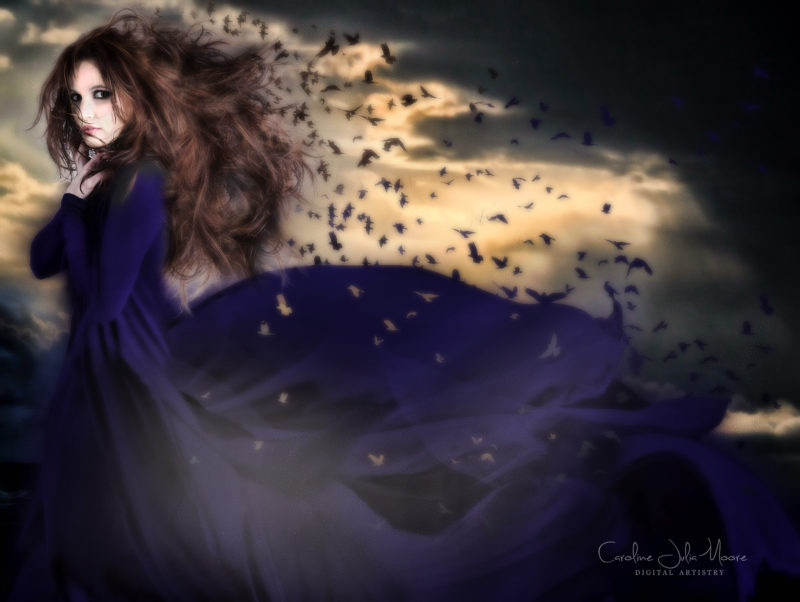
2. Resource Sites (Scrapbook Sites/Elements/Brushes/Textures)
Once I had started to get my head around the minefield that is copyright and licensing for stock photo sites it got me thinking. What about all the elements, brushes etc. that I have downloaded? Where all commercial use; could they be used for artwork to sell? Again, remember that you are buying the License and not the item.
Even if you buy a license, this may be for personal use only. Most Scrapbook sites primarily sell elements for Personal Use only. There are often a limited amount of items grouped under a Commercial Use menu and some sites will give you the option of buying an Extended License rather than Personal Use licenses.
Why do sites offer these resources to be used in creations in the first place if the cannot be used for artwork? The way that I could appreciate the legalities was to view things as a hobbyist or as a scrap-booker. In this case I would be using items purely for my own pleasure to put on my wall or to share with family, friends and other enthusiasts. Artwork in this sense is fine; these pieces of work would not be sold.
Pixelsquid has one license only. You can use their elements within your artwork even if you are selling your work. When you download items from, however, note that exceptions apply to stock marked as ‘Editorial’.
“The Editorial notice is one way to alert you that certain subject matter depicted by Stock Imagery, such as a manufactured product under a brand name, may be protected by another party’s Intellectual Property rights (“Other-Party Intellectual Property”). Permitted use of Other-Party Intellectual Property in Stock Imagery is limited to news reporting.”
Raw Exchange currently has 2 levels of license to cover their resources (overlays, elements, textures etc.). They offer a selection of resources that are free to use, so long as attribution is given. This is a Creative Commons Attribution License. Packages from Raw Exchange that are paid for come under a Commercial License and can be used within artwork. For more information see http://raw.exchange/licenses/.
There are lots of other sites will offer free items on the basis that you list your source (e.g. Obsidian Dawn , Brusheezy). Within such sites there is sometimes the option to buy a license so that you are not required to give any attribution. In this case make sure you have downloaded the license have a copy of your resource file. You may find it helpful to organize your files into folders of commercial or personal use. I went one step further and deleted everything I was unsure of and re-downloaded only resources I could use.
So again, the bottom line is to check the terms for each item you download.
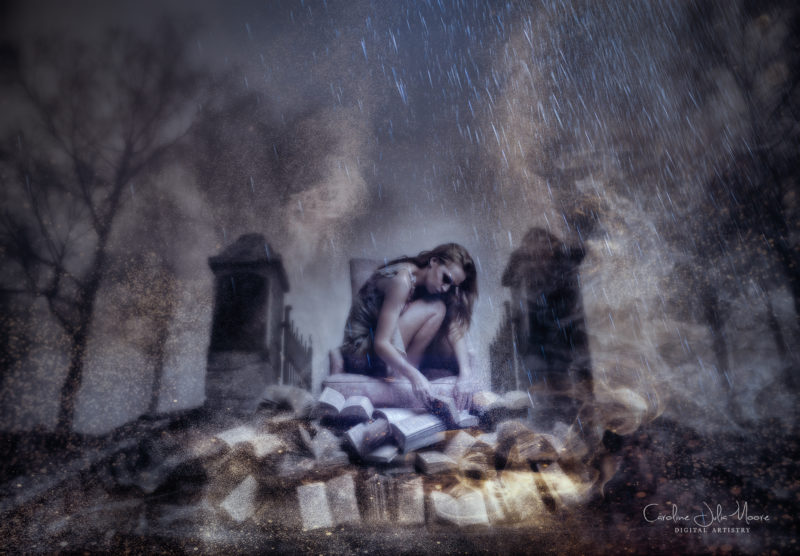
Shift Art Shop has model stock, landscape stock, interior building stock, textures and much more! You must take a look!
Visit the New Shift Art Shop!
3. Creative Commons & Public Domain
Creative Commons images offer a great source for materials. But even images offered under a Creative Commons agreement have restrictions placed on them if they are to be used in artwork for sale. There are multiple licenses for different uses. You can understand these by looking at the symbols in the image description and the accompanying letters.
The Six Types Of Creative Commons Licenses:
i. Attribution (CC BY) which means that you can use the image so long as you credit the photographer for the original.
ii. Attribution-Share Alike (CC BY-SA) you can use the image so long as you credit the photographer and license your new creation under the identical terms. In this case your artwork can also be used for commercial use by others. This is the license used by Wikipedia. Be careful with this, since any of your work then using such an image then becomes available in the public domain.
iii. Attribution-NoDerivs (CC BY-ND) you cannot use these for your artwork since it is requires the image to be unchanged and in whole, with credit to the photographer.
iv. Attribution-Non-Commercial (CC BY-NC) you can use these images in artwork so long as you are not going to sell it. Your work must acknowledge the photographer and be non-commercial.
v. Attribution-NonCommercial-Share Alike (CC BY-NC-SA) you can use these images in artwork not for sale. Your work must acknowledge the photographer, be non-commercial and must then license your creation under the identical terms.
iv. Attribution-NonCommercial-NoDerivs (CC BY-NC-ND) you should not use these images since you can only with credit to the photographer, cannot alter the image in any way or use them commercially.
Images available in the ‘public domain’ are not always free to use in your artwork as you may assume. There have been legal cases where photographs have been taken from, for example, google images or Pinterest. You need to check every image extremely carefully. Never assume that if there is not information on copyright/licensing this means they are free to use. Such assumption has caught many bloggers out who have been faced with legal action from photographers.
Equally it is important not to believe all hearsay about what is or is not in the public domain. For example, even though Marilyn Monroe’s ‘likeness’ is in the public domain, this does not cover all photographs. Use has resulted in legal action since images cannot be used if there are independent copyrights attached. Since copyrights are renewable it is sensible to research and check each image for the attached copyright licenses.
Whilst the general rule is that images dating earlier than 1920s predate copyright you also need to apply caution. Indeed, Wikepedia states;
“In the U.S., any work published before January 1, 1923 anywhere in the world is in the public domain. Other countries are not bound to that 1923 date, though. Complications arise when special cases are considered, such as trying to determine whether a work published later might be in the public domain in the U.S., or when dealing with unpublished works. When a work has not been published in the U.S. but in some other country, that other country’s copyright laws also must be taken into account… An image may, for example, show a painting that belongs to the estate of the artist. Such images may be restricted to ownership of the estate and subject to copyright and intellectual property.”
In situations such as these, it is best to refrain from using images completely unless you are sure that you have the rights to do so. This even applies to a creation that is not for sale; indeed, legal action has been taken against online bloggers.
So, even within Creative Commons and Public Domain it is best not to assume. If you want to use an image, research into the possible restrictions of using that image and do this for each image you use.
4. Deviant Art
Deviant Art was founded on 7th August, 2000. The website states that:
“DeviantArt is the world’s largest online social community for artists and art enthusiasts, allowing people to connect through the creation and sharing of art.”
The website, among other things, is an amalgamation of portfolios, print-on-demand, and stock providers. You can type in a search term and look for stock providers of these images. This is a hugely valuable source for photos and is especially valuable to those looking for fantasy/costume stock images that are difficult to source elsewhere.
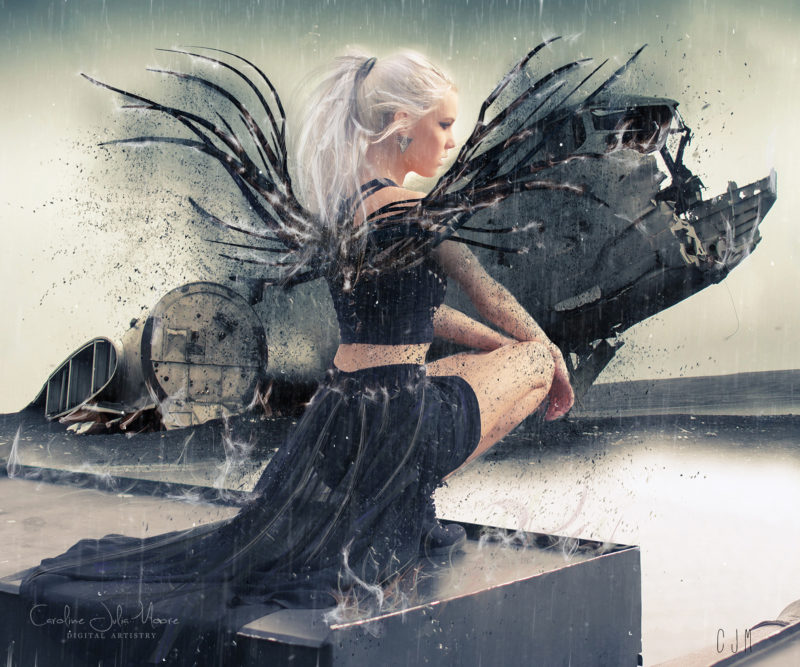
However, this does not mean you can download and use anything you want. You need to carefully search the terms of each provider. Some will only allow use within Deviant Art. Others will not permit commercial use. Pretty much all will require attribution. Personally, I find it helpful to organize stock from Deviant Art into folders for each provider. Within these folders I save a document showing their specific terms (often this is a saved Screenshot).
I really think with Deviant Art you need to apply your common sense. Make sure you check the terms for each image. If you use a stock resource, then employ a level of decorum and courtesy. Consider thanking the person who has provided stock, or even donating to them. If you are not clear on their terms of use, message them. If in doubt, do not sell artwork that uses an image until you are certain you are permitted to do so. Stock photo providers on Deviant Art are artists too and really do deserve our respect.
6. Sources of Free Stock Images
Several photo hosting sites exist where photographers provide images that are free for others to use. The two main sites are MorgueFile and Pixabay.
The quality of content or resolution of images may not be as polished as pay-for stock image sites, but they provide a fantastic source for resources.
Some photo hosting sites even offer a free email subscription service where you get a selection of images sent to you every month or so (for example Snapwire, Unsplash, and deathtothestockphoto.com).
The images on these sites are usually free to use without attribution and for commercial use. However, you do still need to check the description attached with each image to ensure that use is unrestricted. It is also worth noting that not all images have signed Model Releases obtained.
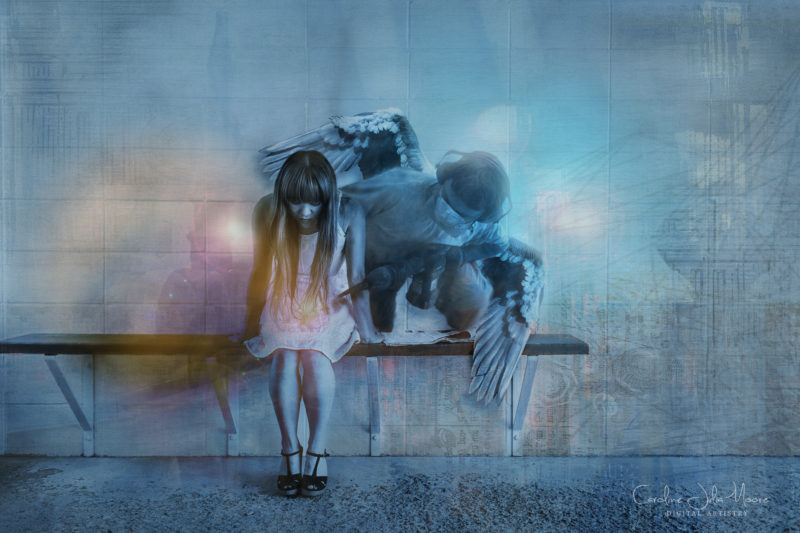
7. Restriction On Your Own Photographs
Even photographs that you take yourself can be subject to restrictions. For instance, if your photograph contains landmarks you may be prohibited from selling the images. Many buildings and landmarks are protected by copyright. Tourists must ask permission from the copyright holder to share their photographs in a public forum, let alone to use in artwork for sale.
For example, although the Eiffel Tower was built in 1889 (and therefore is within the public domain) a clause in EU copyright rules means that taking photographs of the tower in the evening is not permitted since its various illuminations are subject to author’s and brand rights.
Even when you take your camera with you whilst out walking you need to be careful what you photograph. For instance, if you take a photograph of a private residence, even if you are off the grounds of the property, you need to check that you have permission to use the photograph. Often a property release needs to be obtained.
To Summarize:
Check the terms. If you are unsure then DO NOT USE. Resist the temptation to use a resource when you are not sure of the license in artwork to sell. Simply use something you know you have the correct license for.
You may come across some fantastic photography that is perfect for an idea for a piece of artwork that you have. Why not email the photographer and ask if you can use their images; you may well develop some fantastic collaborations.
Be cautious of the legalities of what you photograph. If in doubt check.
Very helpful information! Thank you.
I am pleased it was helpful 🙂
Such a minefield but thanks for such a comprehensive document.
Yes it really is and you are very welcome.
Very useful. I realized how complicated it is.
Can I use everything I downloaded from Sebastian Michael on Awake?
As far as I know you can use any assets downloaded from Awake. However, it would be best to confirm that with him directly.
What if I use multiple images from istockphoto to create one postcard for resale…do I have to pay an extended license for each when only “one” main istockphoto in the postcard is where the “primary” value lies on the postcard design? In other words, the other istockphoto images (not the main primary value image) used in the postcard design for resale are just environment images like the background texture. Thanks
So helpful, thank you.
Thank you for all the effort you put into this and for sharing it wit us budding artists. Thankfully I use my own images but it was quite interesting what you said about that also. Thank you 🙂
I have spent hours digging through licensing, and it can be quite confusing. It’s time well spent to avoid getting in a fix for using an image without the proper license.
When I use a free image, I right-click and do a google search for it to see what comes up. Sometimes the free sites have images people have posted that belong to someone else and are not properly licensed.
Great article. Thanks for the information.
Thanks for all the information, it was very much but also very helpful 🙂
But if I make paintings from photos from Shutterstock?
Very useful. I realized how complicated it is. 🙁
Useful and inspiring ! Thank you…
Thank you. it’s a Godsend. I wasn’t sure which direction to go with my artwork. You have substantially answered my questions.
A lot of useful information to take in, it is worth the time to avoid later problems. Thank you
This is going into my permanent files to be used over and over again! Thank you so much
Great article Caroline…..this will go in my permanent files as well….
Thank you so much for this information.
I have purchased an enhanced licence to paint a photo provided by Shutterstock … when acknowledging the photographer I am not sure where to put it….does “Photographers Name/Shutterstock” go with my signature at the bottom corner of the painting or on the reverse side/back of the painting?
Sandra, I can’t answer this accurately on behalf of Shutterstock, but you could have a look at their licensing info here: https://www.shutterstock.com/license
You can scroll down to the Credit & Copyright Notices for basic info. Otherwise I’d recommend emailing them for more details.
Thanks for the super helpful article! ditching all dozens of stock picks for my next project since each Extended is $80 🙃 Getting everything from Colourbox – thanks for mentioning that too btw, saved my skin.
You helped clear up some of my questions about upcoming projects I plan to sell. Your samples and copy help very much for clarity.
I feel more confident that my work will not run into legal roadblocks. The art business is hard enough!
Thanks so much,
David G Hart
This has been above and beyond the most useful and easy to read explanation of copyright rules I’ve ever come across.
Thank you so much Caroline!
Thanks for this article, it is enlightening. Here is another with great info should your readers be seeking additional information on the topic:
https://www.bellevuefineart.com/copyright-issues-for-artists/#:~:text=When%20an%20artist%20uses%20a,use%20the%20photo%20for%20reference.
Thanks 🙂